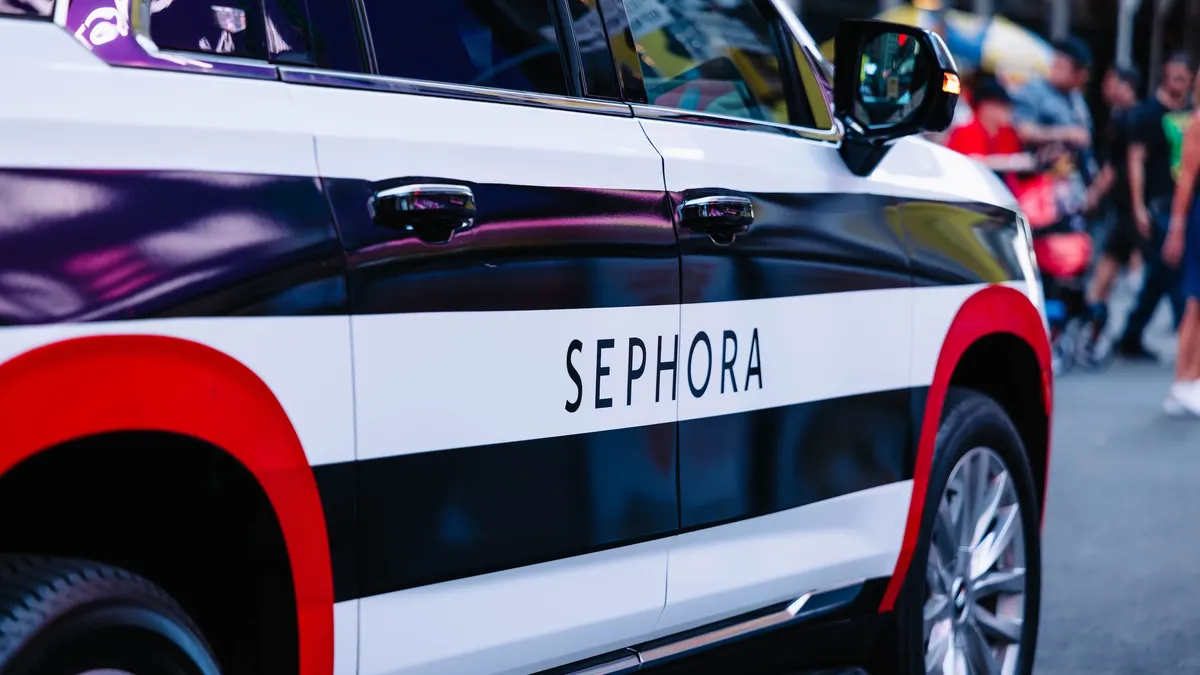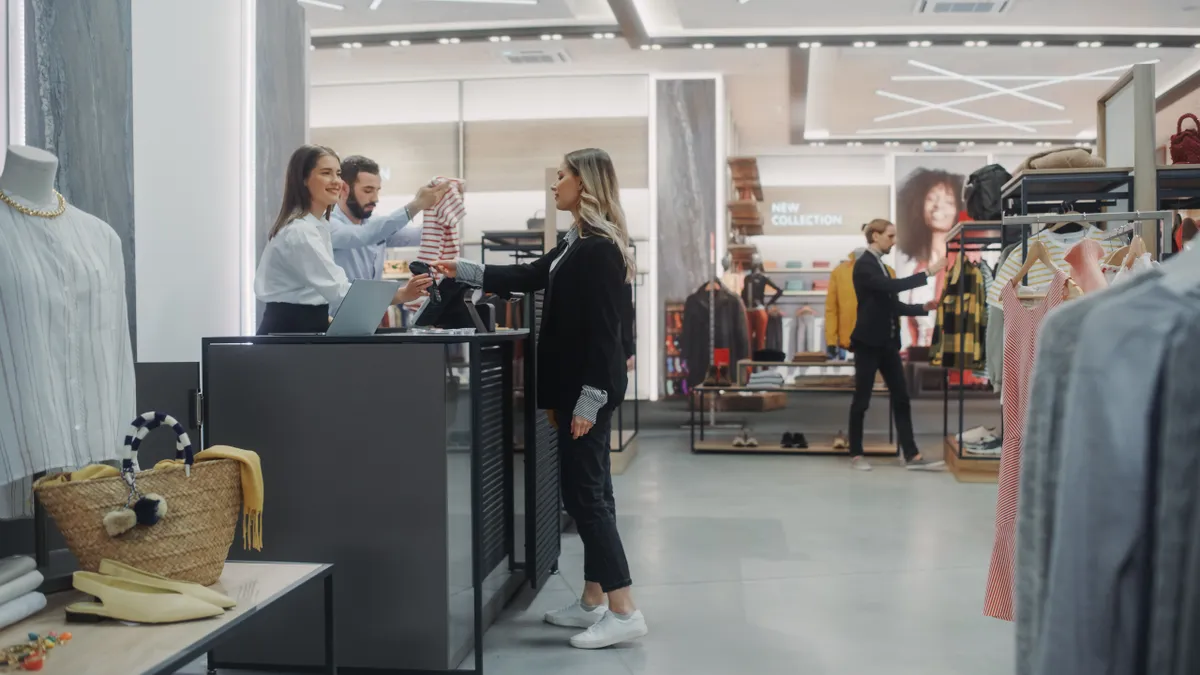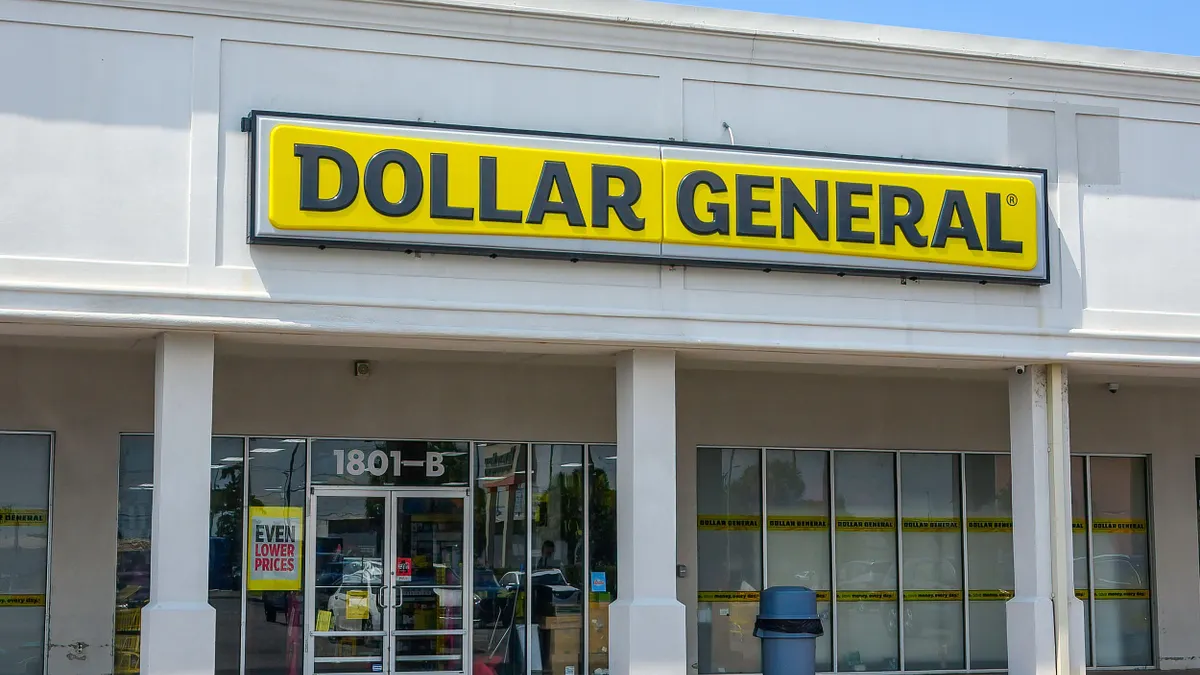In a retail landscape trying to cater to millennials and Gen Z, experiential retail has become both buzz word and synonym for "good retail," and some sectors are better poised to adapt to that trend than others.
Beauty retail, for example, has been held up as a prime case study of experiential retail, with specialty stores like Sephora and Ulta pioneering the movement toward services, fresh store concepts and play-based retail. Their success is pushing the rest of the category to shift. Not only have drugstores like CVS and Walgreens adjusted their beauty strategy to meet the same high standards, but department store stalwarts like Macy's and Saks Fifth Avenue have also been incentivized to adapt.
But, like an infectious pop song (or an infectious disease, depending on the retailer), experiential retail has spread far beyond just the beauty department. It's surfaced in all manner of ways, from Casper's pay-to-nap concept to efforts by Nike and Adidas to make trying on sports gear a more active and involved process.
Sports and outdoor retail is another sector that could be primed for an experiential takeover, especially if more big-ticket players start buying into the model. With Nike's recent launch of the Nike Live concept — an experiential, members-only store format with a localized product assortment set to inform the brand's flagship store launching in the fall — and similar concepts set for other markets, that push is becoming more of a reality.
"The sky is the limit, especially with technology," Michael Solomon, a professor of marketing at St. Joseph's University, told Retail Dive in an interview. "You could use augmented reality to make it seem like you're playing in front of a full house at Madison Square Gardens. There's a lot of things you could do to create these very immersive environments."
Looking at Nike and REI, there are also a lot of different ways to do it.
Driving experience through data
Nike is no slacker when it comes to experimentation — the company's Soho store features a basketball court on the top floor where customers can field test shoes and the brand has been relatively unafraid of diving into new commerce opportunities, selling out of both a Snapchat and Facebook sneaker drop in under an hour earlier this year.
The retailer's Nike Live concept in Los Angeles combines an in-store, physical experience, with an approach that runs on data and draws on mobile to make the shopping experience more convenient and streamlined. The smartphone-heavy approach provides much of the data that informs choices about inventory, assortment and other in-store decisions.
"This is where you wade through the challenges so many other brands have, which is 'We have all this data, but no insights. We have all this information, but no better understanding.'"

Scott Webb
President of Avionos
From a convenience perspective, the company is pushing its mobile app as a catch-all of services for everything from reserving products to loyalty points and product information. Those functions in and of themselves aren't particularly innovative, but Nike is encouraging its customers to use the app at home and in stores. Being able to collect that level of data and insight from loyal consumers could also be incredibly helpful in making sure Nike hits the mark on product selection, as long as Nike puts it to use, according to Scott Webb, president of Avionos.
"If you are a brand that can command that level of interaction, this is where you wade through the challenges so many other brands have," Webb said in an interview with Retail Dive, "which is: 'We have all this data, but no insights. We have all this information, but no better understanding.' So [it's] being able to bridge that and really create meaningful, relevant experiences based off of what I know about you as a consumer."
Webb noted that when consumers willingly give up data they expect more in return, meaning Nike's new concept could face high expectations if it allows only data-giving members into the hallowed grounds of its newest concept.
That intentional exclusivity could also work in its favor, though. Loyal customers spend more with a given brand, and in that way, targeting areas with a high concentration of loyalty members gives Nike a way to speak to its most loyal fans while also demonstrating the benefits associated with a Nike Plus membership for any customers teetering on the edge. Although it does present challenges when it comes to replicating the concept.
"They have to be way better at forecasting what's going to sell and what's not going to sell ... because you can't put that stuff on sale to clear it out. That'll kill the whole concept."

Barbara Kahn
Professor of Marketing at the Wharton School of Business at the University of Pennsylvania
In order for customers to see the appeal of this approach, the localized assortment Nike is pitching has to be spot on, according to Barbara Kahn, a professor of marketing at the Wharton School of Business at the University of Pennsylvania. The assortment is set to rotate every two weeks.
"The problems are gonna be forecasting demand and making sure you can do it in an efficient way," Kahn told Retail Dive in an interview, noting that the store's designation as a localized, exclusive concept in some ways raises the bar higher than at, for example, department stores. "They have to be way better at forecasting what's going to sell and what's not going to sell and that kind of stuff than they were because you can't put that stuff on sale to clear it out. That'll kill the whole concept."
Experiential retail as strategy
It's a bold marketing strategy to exclude shoppers, but all indications point to Nike Live being more than just a one-off flashy store to draw in shoppers. Cathy Sparks, VP and GM of Global Nike Direct Stores, told Retail Dive in July that the plan was to scale the model if it was successful, and to expand some of its services and features to the company's U.S. store fleet.
While the success of the store is yet to be determined, the concept fits in well with the sportswear retailer, and in particular, the limited edition "drop" culture that's associated with the sneaker market. The fast-moving assortment mirrors one of the most popular movements in athleisure retail right now — exclusive collections that launch, and sell out, incredibly quickly.
Nike has already had success with limited offerings with sneaker drops on social platforms, and Adidas recently had its own sneaker drop success story through an integration with Snapchat, but this move appears to take that ethos and apply it to an entire brick-and-mortar location. Nike by Melrose in Los Angeles will feature some products exclusive to that store, ostensibly to keep shoppers coming back, but also to give non-loyalty members a reason to buy into the club.
"Michael Jordan stopped playing basketball 20 years ago and when the new Air Jordans come out you still have lines around the block."

Scott Webb
President of Avionos
It has the potential for serious upside if Nike hits the right points — and as Webb notes, they've been pretty good at hitting the right points in the past.
"All other brands really strive to be as effective as Nike ... Michael Jordan stopped playing basketball 20 years ago and when the new Air Jordans come out you still have lines around the block," Webb said.
Webb also noted that with the local focus of the Nike Live concept, it likely wouldn't bring in tourists like other flagship stores — which could give any future iterations of the format the flexibility to be even more localized with assortment, whether its through celebrated athletes from the area or an emphasis on local preferences for sport and exercise types.
"The real innovation is not just generally having market-specific assortments but really using the data to drive that and then having the fulfillment capability to keep it fresh," Webb said. "Not just to do seasonal assortments, but to do bi-weekly assortments and to keep that on track and on par — that's really compelling."
Breaking the four walls
REI's approach to in-store experience — aside from having trial areas for customers to test out hiking boots and other gear — has been to abandon the store altogether. After all, why use a store to show customers how well your products work when you have the whole outdoors?
This is evidently the logic behind REI's host of outdoor experiences, from local hiking and camping trips to international and domestic "Adventures," which REI members (and non-members) can pay to attend. It's an entirely different method than Nike's, but it also seeks to create different associations. While Nike Live demonstrates the value of its loyalty program and of data-controlled personalization, REI's brand-led trips ask customers to associate the name "REI" with "outdoor expertise."
"You've got the same customer who's buying the backpack is also an adventure traveler, so why not get into the travel business?"

Michael Solomon
Professor of Marketing at St. Joseph's University
One way of creating that association is, arguably, through the event itself. For example, a customer goes on a camping trip with REI, is guided through several hikes and learns new skills along the way — later in the year, when that same customer decides they need a new pair of hiking boots, they're more likely to think of the retailer.
Even if customers aren't purchasing products as a direct result of their last REI trip, the planning that goes into vacations should put the brand top of mind for customers, according to Cort Jacoby, a partner in the consumer and retail practice of A.T. Kearney, a global strategy and management consulting firm.
"It's a way of really enhancing the brand I think in the consumer's mind," Jacoby told Retail Dive in an interview. "And think of how many times you may be thinking about a company like REI as you're thinking about that trip. The mindshare and the brand equity, I think, is exploding when you go through and enhance and bring these experiences to the consumer's mind."
REI co-op members seem to be the target audience for these excursions, and they receive discounts on Adventures, which vary depending on the trip. Importantly, the whole proposition remains heavily in-line with REI's brand, drawing from similar marketing campaigns like the #OptOutside Black Friday movement, which has expanded every year.
"I think it's great for companies to be able to expand that presence within the store with experiences and activities, but I don't think that's sufficient at this point."

Cort Jacoby
Partner in the consumer and retail practice of A.T. Kearney
The outdoorsy trips that REI leads target the typical REI customer: one who is probably interested in the environment, a la the company's commitment to "rewilding" efforts, and likely sustainability as well — something REI caters to through a used gear website and regular "garage sales" of used equipment, along with other efforts.
"You've got the same customer who's buying the backpack is also an adventure traveler, so why not get into the travel business? Or partner with someone who does it?" Solomon said, noting that REI's most loyal customers are the obvious starting point, whether or not REI uses the trips to lure in new shoppers in the future.
The takeaway
Most retailers are probably far from adding a travel component to their business — and not all of them should. What works for REI won't work for Nike, nor will it work perfectly for other retailers. Still, it is worth thinking outside the box. Last year, REI drew in 375,000 people through its Outdoor Programs and it currently features over 175 itineraries for REI Adventures.
Whether or not international travel is on the list, other retailers would do well to consider opportunities of their own for getting outside the store, according to Jacoby. "The inside of the store is a great thing, but let's face it: the traffic continues to decline. That's just a major trend that continues to happen," he said. "I think it's great for companies to be able to expand that presence within the store with experiences and activities, but I don't think that's sufficient at this point."
"You've got this paradox where millions of dollars are being invested and they're all resting on the shoulders of the least-paid person in the organization."

Michael Solomon
Professor of Marketing at St. Joseph's University
In addition to being an interesting take on experience, Solomon said there is much to gain from retailers selling products that pertain to a particular role — in REI's case the adventurer — rather than sticking to one vertical. For REI, that means selling hiking boots, backpacks and camping trips where those products are used. Solomon sees possibilities for a similar approach at most retailers.
In order for that to be successful, though, store associates must be well-trained and knowledgeable — more in line with REI or Nordstrom's approach to service than the sometimes lackluster training given to store associates.
"You've got this paradox where millions of dollars are being invested and they're all resting on the shoulders of the least-paid person in the organization," Solomon said, adding that for big projects like REI Adventures, where loyal customers are the target, retailers can't afford to disappoint them.
That doesn't mean an entrance into experiential retail of any type should be taken lightly — it's often a serious investment, no matter the approach, and retailers should be cognizant of not copying successful retailers just to feel like they're playing the game, Solomon noted.
"The lesson is: You have to walk before you can run," Solomon said, "but good god, get off your butt and start walking at least, because if you just view your store as a place to hang merchandise you're going to be out of business in three years."





















